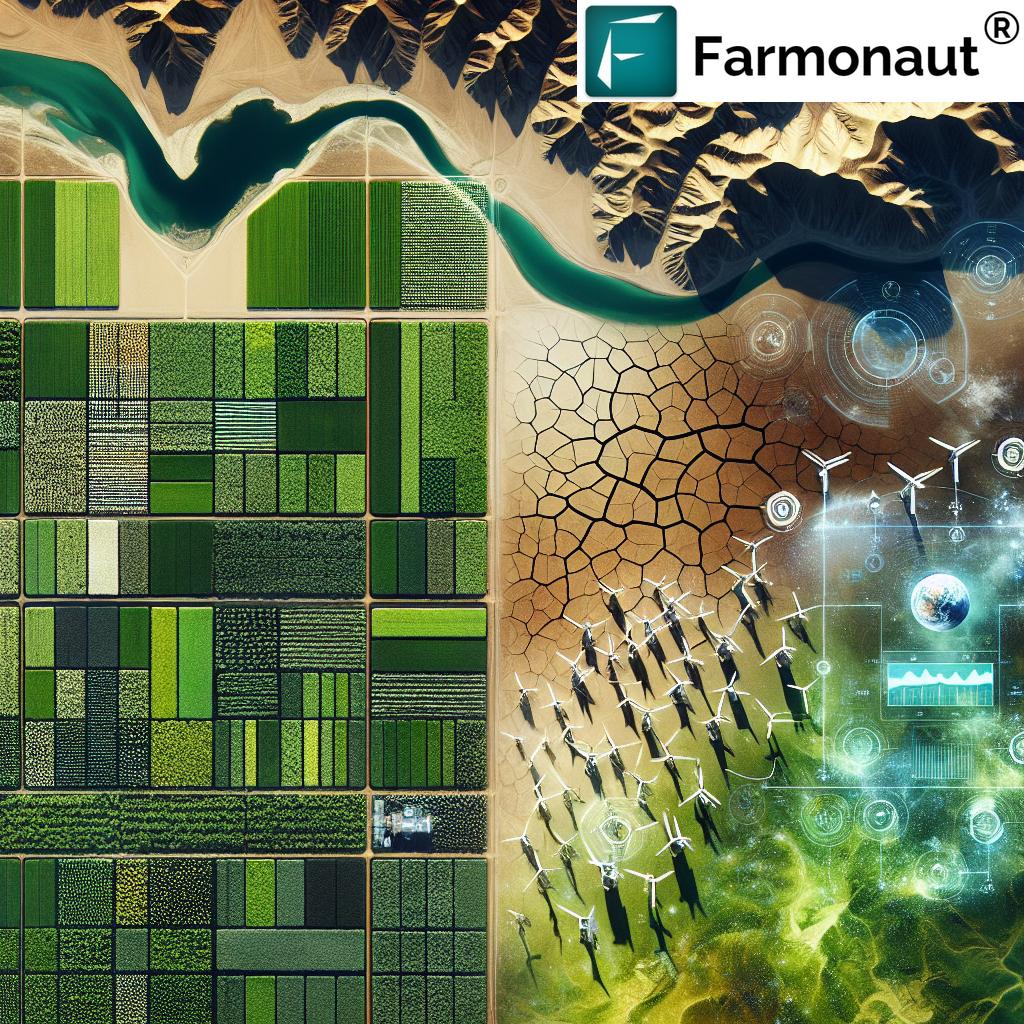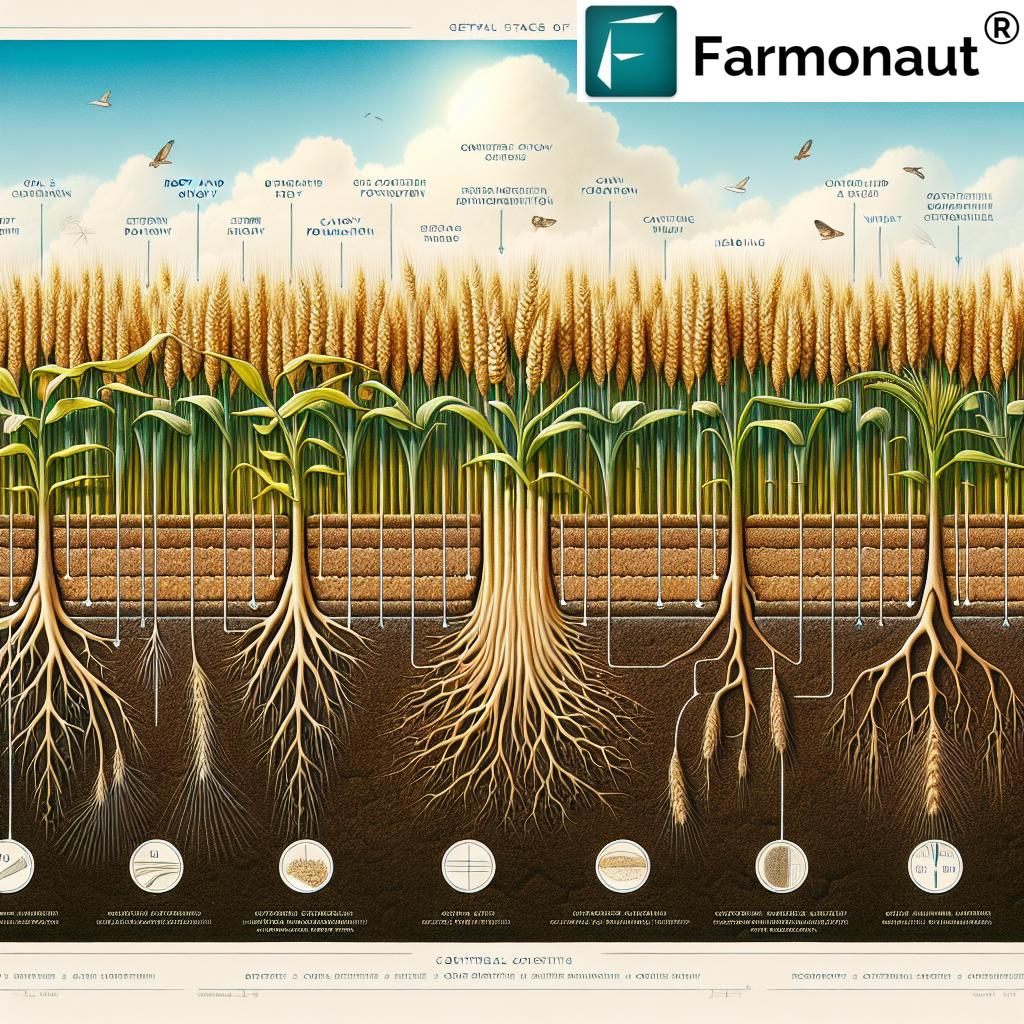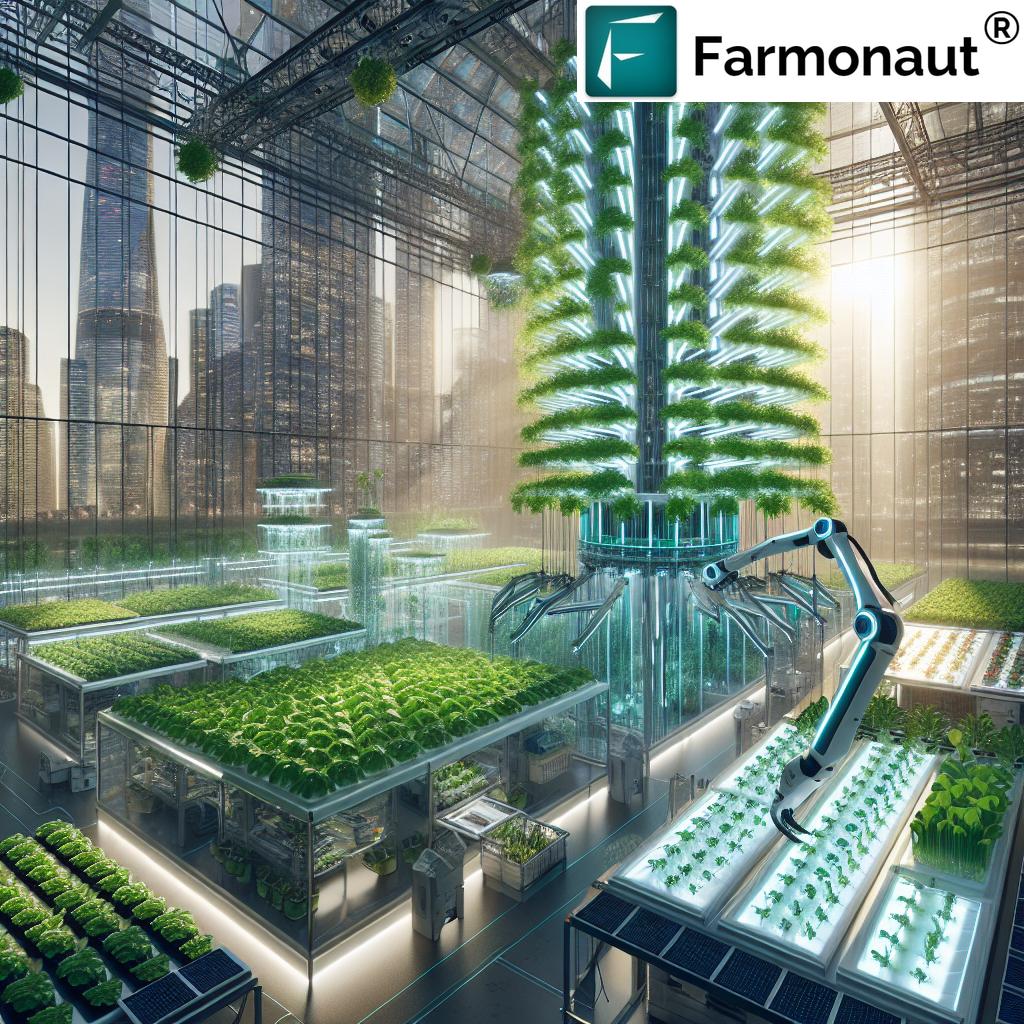Corn Field: Field Corn for Sale, Harvest & Planting – 2025 Advancements & Trends
“Over 80% of corn fields in 2025 will use advanced harvest machinery to increase yield and reduce waste.”
Corn Field 2025: Market and Crop Essentials
Corn remains the cornerstone crop of modern global agriculture, anchoring food systems and industrial supply chains alike. In 2025, the corn field is not just a vital input for livestock feed, but also the basis for biodiversity, bioenergy, and industrial products worldwide. The evolution in field corn planting, harvesting, and marketing is dramatically shaping the future of this vital commodity.
- Field corn for sale is sourced from thousands of acres managed by expert farmers who synchronize production cycles with global demand.
- Advancements in planting, harvest technologies, and sustainable practices are helping minimize loss, improve grain quality, and boost overall yield.
- The challenges faced—including erratic weather patterns and climate change—continue to fuel innovation in every step from field preparation to the sale of harvested corn.
As we advance into 2026 and beyond, it becomes clear that meticulous field corn planting, precision management, and technology innovations will define successful operations, high-quality outputs, and continued market relevance.
Optimizing Field Corn Planting: Precision, Density & Seed Choices
Optimizing field corn planting begins with a strategic approach—a fusion of science, technology, and experience. In 2025, planting methods have become both more sophisticated and accessible for farmers of all scales.
Key Elements of a Successful Corn Field Planting Season
-
Precision Planting Systems:
- GPS-Guided Planters enable farmers to control row spacing, seed depth, and population density with millimeter-level accuracy.
- Variable Rate Seeding adjusts seed rate in real-time based on soil mapping and fertility issues, maximizing yield potential in every micro-zone.
-
Advanced Seed Choices:
- Widespread adoption of drought-tolerant and disease-resistant hybrids helps mitigate adverse impacts of climate variability and pest pressure.
- Genetic advancements allow farmers to tailor growing field corn to local conditions—from water-stressed areas to high-fertility regions.
Integration of these technologies allows farmers to:
- Achieve higher stand counts and even emergence—crucial for maximizing kernel development and eventual yield.
- Minimize input waste by targeting exactly where and how much to plant—even within the same corn field.
- Enhance farm resilience in unpredictable growing and weather patterns.
Soil moisture monitoring systems, such as those powered by AI and satellite technology, are increasingly embedded in every stage of field corn planting. Monitoring real-time moisture levels ensures optimal germination and plant establishment.
Benefits of Optimized Planting Strategies in 2025
- Faster field establishment with uniform seedlings
- Reduced seed waste and nutrient overlaps
- Improved crop resilience to erratic weather events
- Higher grain quality and kernel uniformity
- Smoother transition into precision management throughout the growing season
“New planting technologies are projected to raise field corn quality scores by 15% in the upcoming harvest season.”
Sustainable Practices for Corn Field Soil Health
High-performing corn fields demand not just input intensive farming but also the careful nurturing of soil health—the pivotal factor influencing yield, kernel quality, and resilience against adverse conditions.
- Crop rotation (especially with legumes like soybeans): Reduces disease cycles, improves organic matter, and optimizes nutrient availability.
- Cover cropping: Adds biomass, prevents soil erosion, and promotes water infiltration—all leading to sustainable corn field performance.
- Reduced tillage: Increasingly embraced as a means to lower compaction, preserve organic matter, and stabilize the soil structure.
- Nutrient management: Targeted fertilizer applications—often recommended via soil and satellite monitoring—ensure optimal development and reduce runoff.
Incorporating these sustainable approaches enhances soil vigor, boosts plant health, and contributes to the long-term profitability of farmers.
When using platforms like Farmonaut’s satellite-based monitoring systems, farmers can analyze real-time NDVI (normalized difference vegetation index), monitor soil moisture trends, study nutrient distribution, and track the consequences of weather patterns or pest infestations at scale.
Learn more about large-scale field corn management tools for enterprises and agri-companies with Farmonaut’s Agro Admin App, bringing efficiency and data-driven insights to operations.
Technology Advancements in Growing Field Corn: Sensors, Drones & Precision Systems
Growing field corn successfully throughout the season requires unprecedented attention to management. The latest technologies—from intelligent sensors to real-time data analytics—are now indispensable for high-yield and high-quality production.
-
Satellite & Drone Monitoring:
- Satellite-derived data offers wide-scale monitoring, capturing crop health, stress patterns, and early warnings of deficiency or pest attack.
- Drone-based remote systems provide detailed scouting, enabling early detection of pest infestations and nutrient deficiencies.
-
Advanced Sensor Networks:
- Soil moisture sensors optimize irrigation, helping minimize water use and maintain correct moisture levels for kernel development.
- Automated collection of data reduces manual labor and delivers targeted responses to emerging threats.
-
AI-Based Advisory Systems:
- AI and machine learning interpret vast field data sets, flagging unusual patterns, and suggesting timely interventions.
- Customizable recommendations adjust across pest cycles, weather events, and nutrient needs, safeguarding the crop.
With these new systems, farmers experience an improvement in efficiency (more acres overseen per hour), reduced input waste, and a significant boost in both yield and overall grain quality.
Managing Field Corn Growth & Development: Pest, Nutrient & Water Strategies
The entire growing season is a test of effective management for field corn: pest threats, nutrient needs, and ever-shifting weather patterns require timely, focused interventions and integration of cutting-edge technology.
Integrated Pest Management (IPM) for Corn Field Crops in 2025
-
Biological Controls:
- Increased use of predatory insects and microbial biocontrol to target key pests, minimizing reliance on chemical pesticides.
- Regular release programs and “push-pull” cropping increase system resilience against pest outbreaks.
-
Targeted Chemical Use:
- Application only after careful monitoring—drones and satellite imagery detect early-stage pests, ensuring focused rather than blanket interventions.
-
Automated Monitoring:
- Remote sensors and Farmonaut-powered NDVI crop health assessments reveal subtle changes in growth and kernel development, enabling timely responses that safeguard yield and field health.
Apply for AI-powered pest and nutrient monitoring services via API. See Farmonaut’s Satellite API — designed for seamless farm, business, or enterprise integration. For custom solutions, see our API Developer Docs.
Nutrient and Moisture Management in Corn Fields
- Real-time moisture sensors and satellite analysis balance irrigation needs, avoiding water stress or oversaturation.
- Precision fertilization ensures that nutrients go where they are most needed—improving kernel filling and grain yield.
- Responsive Farmonaut fleet management tools (fleet management) help coordinate machinery and labor to take targeted action at the right time with minimal resource waste.
This constant cycle of monitoring, early detection, and agile response is vital to growing field corn capable of meeting stringent market standards and adapting to the future volatility of climate and demand.
Innovations in Corn Field Harvest: Technology, Timeliness & Efficiency
The heart of any successful corn field operation is the corn field harvest. In 2025, harvesting remains a season of both opportunity and risk: advanced harvesters, AI systems, and improved planning set apart the leaders from the laggards.
-
AI-Integrated Combine Harvesters:
- Utilizing real-time field data, these machines calibrate speed, threshing, and separation based on crop moisture and kernel quality.
- Optimal operation reduces grain loss, mechanical damage, and speeds up the harvest—vital to prevent spoilage or mycotoxin contamination.
-
Advanced Forecasting & Scheduling:
- With better weather forecasting, farmers can orchestrate large-scale harvests that dodge expected storms or temperature extremes.
-
Efficient Post-Harvest Storage:
- Solar-powered or high-efficiency grain dryers, advanced humidity-controlled silos, and real-time integrity monitoring help preserve grain quality until sale.
See how AI and satellite crop monitoring bolster yield and quality in high-risk regions in this comprehensive breakdown:
With these innovations, farmers can now meet diverse market requirements for field corn—whether it’s destined for livestock feed, industrial products, or biofuels.
Field Corn for Sale & Marketing: Global Strategies in 2025
The sale and marketing of field corn is more dynamic in 2025, with technologies influencing pricing, traceability, and buyer trust. The path from corn field to international shipment or local livestock ration is now transparent, data-driven, and responsive to new trends.
-
Digital Marketplaces and Networks:
- Robust online platforms allow small and large farmers alike to access real-time prices, reach buyers worldwide, and negotiate more effectively.
-
Traceability and Transparency:
- With blockchain-enforced traceability such as Farmonaut’s traceability tools (Product Traceability), buyers can follow the journey of every batch—building trust and minimizing fraud.
-
Quality Standards for New Markets:
- For biofuels or bioplastics, rigorous standards for kernel moisture and starch content must be met, highlighting the value of precision during production and especially corn field harvest.
-
Environmental Credentials:
- Field corn with reliable carbon footprinting data (see carbon footprinting by Farmonaut) attracts eco-focused buyers and supports compliance with emerging regulations.
-
Field-to-Market Financing:
- Satellite-based crop verification streamlines crop loans and insurance (see: Farmonaut Crop Loans & Insurance), ensuring timely payment and responsibility up the value chain.
These marketing strategies are essential: they use technology to link field corn for sale directly to the requirements of processors, packagers, and even final consumers—helping farmers maximize profits and market stability.
Corn Field Trends: Technological Comparison Table 2023–2025
To truly grasp the magnitude of advancements in the corn field, review this table comparing planting, harvest, and marketing technologies and their impact on yield, cost, and sustainability from recent years through the transformative season of 2025.
| Year | Technological Advancement | Area of Application | Estimated Yield Improvement (%) | Estimated Cost Savings (%) | Sustainability Impact |
|---|---|---|---|---|---|
| 2023 | Auto-Steered Planters | Planting | 4–6% | 3–5% | Reduced overlap/soil compaction |
| 2023 | Standard Drones for Aerial Views | Growth/Scouting | 2–3% | 2–4% | Spot pest/deficiency mapping |
| 2024 | Basic Satellite Crop Monitoring | Growth/Management | 6–8% | 8–9% | NDVI/crop health analytics |
| 2025 | Variable Rate Precision Seeders | Planting | 10–12% | 12–15% | Enhanced soil/seed synergy, less input use |
| 2025 | AI-Powered Drone and Satellite Crop Monitoring | Growth/Scouting/Nutrient | 15–18% | 15–18% | Early pest/disease detection, targeted response |
| 2025 | Smart Combine Harvesters (with AI) | Harvest | 10–14% | 10–12% | Lower post-harvest losses, better grain quality |
| 2025 | Blockchain-Backed Traceability Systems | Marketing/Sale | 5–9% | 6–7% | Transparency, fraud reduction, market trust |
| 2025 | Advanced Post-Harvest Storage Tech | Harvest/Storage | 7–11% | 9–13% | Better quality preservation, reduced spoilage |
Farmonaut’s Contributions to Advancements in Corn Field Management
As a global agricultural landscape leader, Farmonaut offers affordable, satellite-based insights for crop health monitoring, soil moisture analytics, and operational management. Our platform supports farmers, agribusinesses, and governments as they adapt to new challenges in corn field planting, harvest, and sale.
- Our real-time, AI-based advisory systems help optimize planting dates, track development status, and recommend targeted interventions for pest or nutrient issues.
- Blockchain-integrated product traceability on our platform offers supply chain transparency, helping businesses build trust and demonstrate compliance.
- Via API or app, we provide crop monitoring tools that can be customized for field corn at any scale, enabling precise, data-driven responses to fluctuating conditions.
- With environmental impact monitoring, our solutions support sustainable farm management and meet future regulatory needs for climate-smart agriculture.
Our technology is available worldwide via Android/iOS app, browser, and API so that every farmer, agribusiness, and policymaker has access to advanced monitoring without the high cost of legacy field equipment.
Farmonaut Subscription Options
Whether you are a smallholder or a global enterprise, pick a Farmonaut subscription that best matches your corn field monitoring or management needs:
Explore Farmonaut’s API integration for custom enterprise solutions and applications in corn field monitoring. Visit the Farmonaut API and check the API Developer Docs to get started.
Corn Field FAQ 2025
What is the main use for field corn grown in 2025?
- Field corn is primarily used for livestock feed, industrial products (including ethanol and bioplastics), and processed food ingredients for global markets.
How are new planting technologies improving corn field yields?
- Technologies such as variable rate planters, high-precision GPS mapping, and data-driven seed selection optimize plant population and minimize input waste, leading to improved yield and crop quality.
What sustainable practices are essential for field corn production?
- Key practices include crop rotation (especially with legumes), cover cropping, reduced tillage, and nutrient management based on real-time satellite or sensor data.
How are pests and diseases managed in corn fields in 2025?
- Integrated pest management (IPM) uses biological controls, targeted chemical interventions, and early detection through AI-powered monitoring systems to minimize crop loss.
What role does Farmonaut play in advancing corn field monitoring?
- Farmonaut provides satellite-based crop health, soil, and moisture monitoring, along with AI advisory, blockchain traceability, and management tools for farmers, businesses, and governments worldwide.
How does blockchain traceability support the sale of field corn?
- Blockchain systems, such as those offered by Farmonaut, allow for transparent and secure tracking of field corn batches from production to sale, improving buyer confidence and market access.
Conclusion: Corn Field 2025 – The Future is Data-Driven, Sustainable & Profitable
As we look forward to 2026 and beyond, the corn field of tomorrow unites tradition with technology, precision, and global market intelligence. Planting now begins with satellite signals and high-tech planters; harvesting is managed by AI, and the marketing of field corn for sale demands transparency and proof of sustainability.
Farmers who embrace these advancements, sustainable practices, and new monitoring tools will outpace the challenges of climate, pests, and shifting market requirements. In this dynamic era, the key to thriving in the field corn sector is continuous learning, trusted technology, and mindful resource management.
For more information on corn field planting, harvest, and the future of agricultural technology, explore the videos above and the tools linked throughout this guide. Stay ahead with informed decisions—and turn your field corn into a resilient, profitable crop ready for what the future brings.












